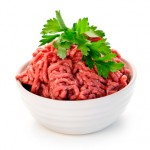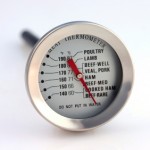When I was a kid, we often used the Five-Second Rule, that meant food falling on a relative clean surface could be eaten if it was picked up in less than that amount of time. In recent years I've heard jokes about this rule: when parents have their first child, they use five seconds as a safe time, with the second, it's ten seconds and with later children, it's wipe off the mud and let them eat whatever dropped.
I received the November issue of the Center for Science in the Public Interest's Nutrition Action Healthletter several days ago and noticed this month's focus was "Safe at Home: How to keep your kitchen from making you sick." I haven't had time to read much of the issue, but leafed through it and saw a brief blurb titled "Ignore the five-second rule."
So today I re-read that section, then went online and found the original article in the Journal of Applied Microbiology and Googled the lead author. Dr. Paul Dawson is a Professor of Food Science at Clemson, got his PhD at North Carolina State University, then did a two-year post-doctoral fellowship. Since joining the Clemson faculty he's published over 80 research manuscripts.
He was on a CNN TV show in 2010 discussing the 5-second rule, double-dipping (chips into a cheese or salsa dip) and, most recently was working on a project on the bacteriologic safety of blowing out birthday candles (See link below).
I read the online 2006 version of the original article in the Journal of Applied Microbiology, which appeared in paper format in April of 2007. Some of the background data is of interest: over 75,000,000 cases of food-borne illness occur in the United States each year and 5,200 of these result in deaths. Dawson's experiments were performed using Salmonella bacteria, which is found in a substantial percentage of poultry, roughly 10% in two studies by the USDA.
My take on Dawson's results is 1). bacteria excrete chemicals allowing them to adhere to nearly any kind of surface (e.g., tile, rugs, cutting boards); 2). once they do so they have "biofilms," microscopic layers that allow them to survive for extended periods of time; 3). they can transfer from those surfaces to a variety of foods (Dawson used bread and bologna) very rapidly; so 4). the five-second rule is invalid and we all need to work on more effectively cleaning "food contact surfaces (counter tops and cutting boards come to mind).
I enjoyed watching the CNN interview with Dr. Dawson and will be intrigued to find out what his birthday candle research will show. In the meantime, I'll quit picking up food that has fallen on what appear to be clean surfaces; they're not.
http://newsroom.blogs.cnn.com/2010/08/01/five-second-rule-urban-myth-or-scientific-fact/





